Cuisine Flavor

How does Chinese cuisine differ from other Asian cuisines ?
Chinese cuisine is one of the most diverse and influential cuisines in the world, with a history that spans thousands of years. While there are many similarities between Chinese cuisine and other Asian cuisines, there are also several key differences that set it apart. These differences include the use of ingredients, cooking techniques, flavor profiles, and regional variations within each cuisine. Chinese cuisine often uses a wider variety of ingredients than other Asian cuisines, including both meat and vegetables. Additionally, Chinese cuisine often incorporates more spices and herbs into its dishes than other Asian cuisines. Another difference is the cooking techniques used. Chinese cuisine often involves stir-frying or steaming foods, while other Asian cuisines may rely more heavily on grilling or baking. Chinese cuisine also tends to use woks for cooking, which allows for high heat and quick cooking times. In terms of flavor profiles, Chinese cuisine has a distinct flavor profile that sets it apart from other Asian cuisines. Chinese cuisine often features bold flavors such as garlic, ginger, soy sauce, and chili peppers. In contrast, Japanese cuisine may have a lighter, more delicate flavor profile that emphasizes umami (savory) flavors. Thai cuisine, on the other hand, may be spicier and more aromatic than Chinese cuisine. Finally, another difference between Chinese cuisine and other Asian cuisines is the regional variations within each cuisine. China has a vast geographic area with many different regions, each with its own unique culinary traditions. Similarly, Japanese cuisine can vary greatly depending on whether it comes from the northern or southern regions of Japan.
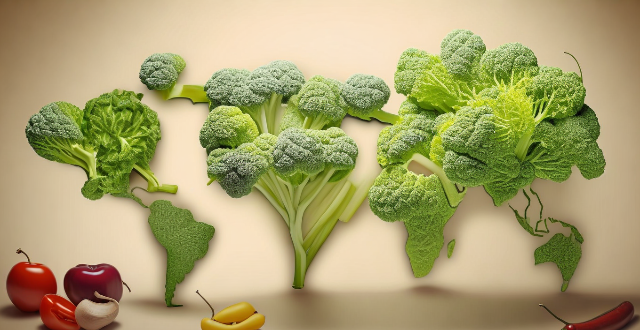
What role does cilantro play in Mexican cuisine in terms of flavor ?
Cilantro is a key herb in Mexican cuisine, adding flavor, aroma, and freshness to dishes. Its unique taste, described as citrusy, grassy, and slightly peppery, complements the bold and spicy flavors of Mexican cooking. Cilantro is used in salsas and guacamole, soups and stews, marinades and rubs, tacos and enchiladas. Its citrusy notes cut through rich ingredients, grassy undertones provide a refreshing contrast, and its peppery bite adds complexity. Cilantro is essential for enhancing the taste and aroma of Mexican dishes.

How do you describe the taste of authentic Mexican cuisine ?
Mexican cuisine is a vibrant and complex blend of flavors that can be both bold and subtle. Here are some key characteristics that describe the taste of authentic Mexican food: ### Spicy Heat Chili peppers and spices like cumin, oregano, and cinnamon add depth of flavor to many dishes. ### Acidity and Tanginess Lime juice and tomatoes provide refreshing acidity and tanginess, while also contributing sweetness. ### Earthy and Nutty Flavors Beans, corn, and nuts offer earthy undertones and richness to Mexican cooking. ### Sweetness and Fruitiness Fruits such as pineapple and mango, as well as vegetables like sweet potatoes, bring a touch of sweetness to savory dishes. ### Umami Richness Cheese and slow-cooked meats contribute deep, savory flavors to Mexican cuisine. ### Herbaceous Notes Cilantro and epazote provide distinctive, fresh flavors that are essential in traditional cooking. ### Texture Variety Crunchy vegetables and creamy avocado-based sauces offer a range of textures that balance spicier elements. ### Bold and Aromatic Garnishes Onions and cilantro are often used as garnishes, adding sharpness and freshness to dishes. Overall, authentic Mexican cuisine is a harmonious combination of spicy, tangy, sweet, umami, herbaceous, and textural elements that create a complex and satisfying gustatory experience.

Why is French cuisine, including desserts, considered among the finest in the world ?
French cuisine, including desserts, is renowned worldwide for its exquisite flavors, meticulous preparation, and artistic presentation. This reputation is due to factors such as historical significance, quality ingredients, artisanal methods, chef training, innovation, and attention to detail. French cuisine has a long history dating back to medieval times when it was influenced by various cultural invasions and trades. Over centuries, French chefs refined their techniques, creating a rich culinary tradition that emphasizes depth of flavor and precision in cooking methods. French cuisine places a high value on using fresh, high-quality ingredients, often sourced locally. The variety of ingredients available in different regions of France allows for a wide array of dishes and flavors. French baking traditions, such as those used in making croissants and baguettes, involve complex processes that yield exceptional results. Many French desserts, like macarons and éclairs, are handcrafted with care, ensuring each piece is of the highest quality. France is home to some of the best culinary schools in the world, where future chefs receive rigorous training. Young chefs often learn from experienced masters through apprenticeships, preserving techniques and recipes. French chefs are known for their innovative approaches to traditional dishes, pushing the boundaries of gastronomy. The integration of international flavors into classic French dishes keeps the cuisine dynamic and exciting. French cuisine emphasizes not just taste but also the visual appeal of the dish, making every meal an experience. The emphasis on all senses—smell, sight, taste, touch, and even sound—creates a comprehensive dining experience.
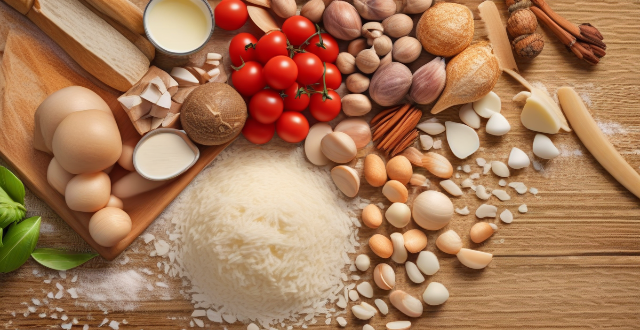
What kind of ingredients are commonly used in Japanese cuisine ?
Japanese cuisine is known for its unique flavors, fresh ingredients, and beautiful presentation. The most commonly used ingredients in Japanese cooking include white rice, brown rice, sweet rice, tuna, salmon, squid, shellfish, chicken, beef, pork, cabbage, eggplant, green onions, mushrooms, soy sauce, miso, udon noodles, soba noodles, ramen noodles, rice vinegar, sesame oil, nori, wasabi, and pickled ginger. These ingredients combine to create the diverse and delicious flavors that make Japanese cuisine so beloved around the world.
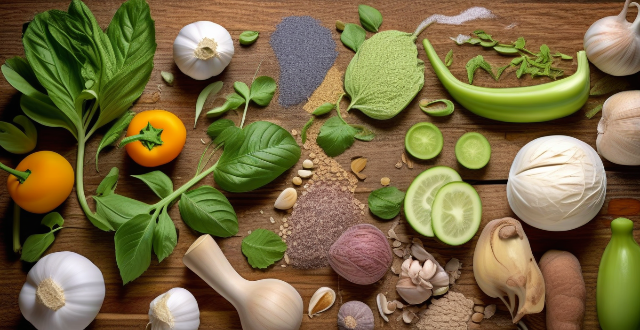
What ingredients are commonly used in Mexican cooking to create its unique flavor profile ?
The article provides an overview of the key ingredients used in Mexican cooking, including chili peppers like ancho, jalapeño, serrano, and habanero; herbs and spices such as cumin, coriander, oregano, and cilantro; and other ingredients like tomatoes, onions, garlic, lime juice, epazote, and hominy. It explains how these ingredients contribute to the distinctive flavor profile of Mexican cuisine and encourages readers to experiment with creating authentic Mexican meals at home.

What are the most popular pasta shapes used in Italian cuisine ?
The article discusses the most popular pasta shapes in Italian cuisine, highlighting their unique characteristics and ideal pairings. The list includes iconic shapes like spaghetti and linguine, as well as more distinctive forms like fusilli and orecchiette. The popularity of each shape often depends on the region and local traditions, with some shapes being better suited for light sauces and others for heartier dishes. Overall, the article emphasizes the diversity and versatility of pasta in Italian cuisine.
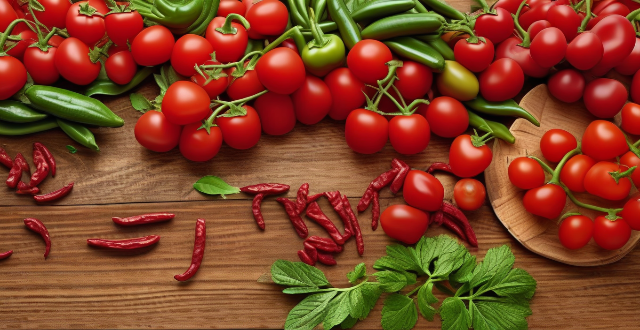
What are some traditional Mexican flavors ?
Mexican cuisine is known for its bold and vibrant flavors, which are a result of the country's rich history and diverse cultural influences. Some of the most traditional Mexican flavors include chili peppers, herbs and spices, fruits and vegetables, dairy products, and meats and seafood. These flavors come together to create the vibrant and delicious cuisine that Mexico is known for.

How has Indian cuisine evolved over time ?
The evolution of Indian cuisine is a result of various factors such as geography, climate, history, culture, and trade. India's diverse geography and climate have led to unique culinary traditions in each region, with coastal areas known for seafood dishes and northern plains famous for dairy products and bread. Historical influences like the Mughal era and British colonial period have also shaped Indian cuisine, introducing fusion dishes and bakeries. Trade routes and globalization have integrated foreign flavors into Indian dishes, while regional variations highlight the country's culinary diversity. Modern innovations include fusion dishes and healthier versions of traditional recipes. Overall, Indian cuisine reflects the nation's rich cultural diversity and adaptability to changing trends.

What are the key ingredients in Indian cooking ?
Indian cuisine is known for its rich flavors and diverse dishes. The key ingredients that make Indian cooking unique are spices, herbs, ghee, lentils, rice, yogurt, nuts and seeds, and bread. These ingredients add flavor, color, and aroma to the dishes and create authentic and delicious Indian cuisine.

In what ways does cultural fusion influence food and cuisine around the globe ?
Cultural fusion significantly impacts global cuisine by introducing diverse ingredients, techniques, and fusion cuisines. It encourages culinary innovation and creativity while also promoting the globalization of food cultures. Additionally, cultural fusion affects eating habits and dietary restrictions worldwide.
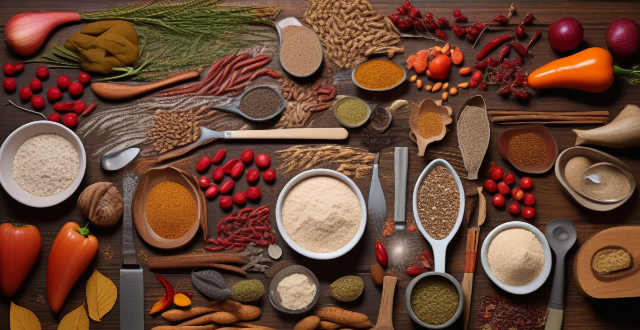
What is the significance of spices in Indian cooking ?
The significance of spices in Indian cooking is multifaceted, encompassing flavor enhancement, cultural traditions, and medicinal benefits. Key spices like turmeric, cumin, coriander, mustard seeds, fenugreek, red chili powder, garam masala, curry leaves, asafoetida, and tamarind contribute to the complex flavor profiles characteristic of Indian cuisine. These spices are used through techniques such as tempering, grinding, and roasting to create a balance of tastes and visual appeal. Historically, spices were valuable commodities in trade and are integral to traditional medicine and religious practices. Regional variations in spice use reflect India's diverse geography and cultural heritage. Understanding the nuances of spice usage allows for a deeper appreciation of the artistry behind Indian dishes.

What are the best ways to explore the diverse cuisine of South America ?
South America is a continent rich in cultural diversity, and this diversity is reflected in its cuisine. Here are some of the best ways to explore the diverse cuisine of South America: 1. Visit local markets and street food stalls for authentic dishes. 2. Take cooking classes to learn how to make traditional dishes. 3. Dine at local restaurants for regional specialties. 4. Attend food festivals for a variety of South American dishes. 5. Travel off the beaten path for unique culinary traditions. 6. Try different cuisines within South America for a well-rounded understanding of the continent's culinary diversity.

What are some gluten-free breakfast options that don't sacrifice flavor ?
Gluten-Free Breakfast Options that Don't Sacrifice Flavor: Gluten-free pancakes, oatmeal with fruits and nuts, egg dishes, smoothies, gluten-free cereals, and breads are all delicious and healthy breakfast options for those who are gluten-free.

Where can I find a fine dining experience in Tokyo, Japan ?
Tokyo is famous for its diverse culinary scene, offering a wide range of fine dining experiences that cater to various tastes and preferences. Whether you're in the mood for traditional Japanese cuisine or international fare, there are plenty of options to choose from. Here are some of the top places to find a fine dining experience in Tokyo: ## Traditional Japanese Cuisine ### Kohju - **Location**: Ginza district - **Cuisine**: Kaiseki (traditional multi-course meal) - **Highlights**: Elegant atmosphere, seasonal ingredients, skilled chefs - **Price Range**: High-end ### Ishikawa - **Location**: Shibuya district - **Cuisine**: Sushi (raw fish served with vinegared rice) - **Highlights**: Fresh seafood, expert sushi craftsmanship, intimate setting - **Price Range**: Moderate to high-end ## International Cuisine ### Quintessence - **Location**: Shiodome district - **Cuisine**: French - **Highlights**: Innovative dishes, impeccable service, stunning views of Tokyo Bay - **Price Range**: High-end ### Narisawa - **Location**: Minami Aoyama district - **Cuisine**: Modernist Japanese with international influences - **Highlights**: Creative presentations, locally sourced ingredients, artistic plating - **Price Range**: High-end ## Vegetarian/Vegan Options ### Yohji - **Location**: Harajuku district - **Cuisine**: Vegan Japanese fusion - **Highlights**: Flavorful plant-based dishes, unique flavor combinations, cozy atmosphere - **Price Range**: Moderate ### Sougo - **Location**: Roppongi district - **Cuisine**: Vegan Italian - **Highlights**: Hearty pastas, authentic Italian flavors, friendly staff - **Price Range**: Moderate to high-end ## Budget-Friendly Options ### Ichiran Ramen - **Location**: Multiple locations throughout Tokyo - **Cuisine**: Ramen (noodle soup) - **Highlights**: Customizable broth and toppings, fast service, affordable prices - **Price Range**: Affordable ### Tenya - **Location**: Multiple locations throughout Tokyo - **Cuisine**: Tendon (tempura over rice) - **Highlights**: Crispy tempura, generous portions, quick meals on the go - **Price Range**: Affordable No matter your budget or dietary preferences, Tokyo offers a diverse array of fine dining experiences that will leave you satisfied and eager to return for more.

How does the use of chilies contribute to the distinctive taste of Mexican food ?
Chilies play a pivotal role in Mexican cuisine, contributing heat, flavor complexity, color, and cultural significance. They offer varying intensities of spiciness, from mild to very hot, and their fruity or earthy flavors complement other ingredients. Visually appealing with vibrant colors, chilies also have nutritional benefits like antioxidants and metabolism boost. They are versatile in cooking, used fresh, dried, or smoked, and pair well with acidic and herbal ingredients. Chilies are integral to traditional dishes like enchiladas and mole sauce, showcasing their essential role in defining the unique taste profile of Mexican food.

How do Mexican spices and seasonings combine to create their iconic flavors ?
**Mexican Spices and Seasonings: A Flavorful Fusion** Mexican cuisine is renowned for its vibrant flavors, derived from a mix of spices and seasonings that reflect the country's rich history and cultural diversity. These ingredients add depth and character to dishes, creating iconic Mexican flavors through careful combination and layering. Key components include chili peppers like ancho, poblano, jalapeño, serrano, and habanero; herbs such as cilantro, epazote, and marjoram; aromatics like onions, garlic, and tomatoes; dried spices including cumin, coriander seed, cinnamon, and clove; and condiments like lime juice, salt, and peppercorns. The signature flavor is created by layering heat and sweetness, balancing herbal notes, building depth with aromatics, enriching with dried spices, and finishing with acidity and salt. This intricate blend of flavors makes Mexican food beloved worldwide.

How do I get that restaurant-quality flavor in my homemade crab cakes ?
How to Achieve Restaurant-Quality Flavor in Homemade Crab Cakes: - Freshness and quality of ingredients are crucial. - Lump crabmeat is preferred for its sweet flavor and good texture. - Use a combination of seasonings like Old Bay, mustard, Worcestershire sauce, and hot sauce. - Bind the mixture with mayonnaise or mustard lightly. - Pan-fry or oven-bake the crab cakes for different textures. - Serve with remoulade sauce and sides like green salad or roasted vegetables. - Allow the crab cakes to rest before cooking and avoid overcrowding the pan.
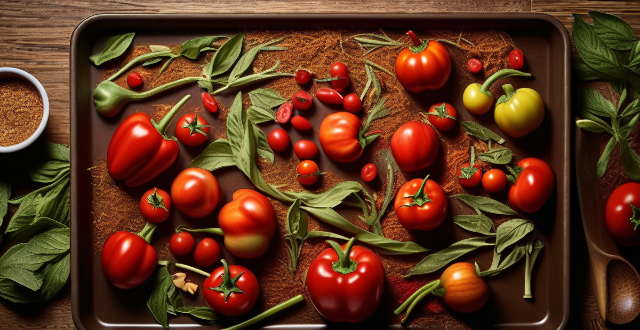
How can I recreate authentic Sichuan flavors at home without making it too spicy ?
To recreate authentic Sichuan flavors at home without making it too spicy, focus on understanding key flavor components like Ma La (numbing spice), hot and spicy, and sweet and fragrant. Select ingredients carefully, using moderately hot chili peppers and Sichuan peppercorns sparingly. Incorporate aromatics like garlic, ginger, and doubanjiang. Utilize cooking techniques such as toasting peppercorns, controlling heat with a mix of chili forms, balancing flavors, and tasting as you cook to adjust seasoning. Try making a classic Sichuan dish like Kung Pao Chicken with these tips in mind to achieve an authentic taste without overwhelming spiciness.
![What are the best places to eat like a local in [insert city/country] ?](/images/2kge/2befbfac-8832-4928-9125-7d71418d7604.png)
What are the best places to eat like a local in [insert city/country] ?
In this guide, we explore the best places to eat like a local in [insert city/country], from street food vendors and hole-in-the-wall restaurants to bustling markets and bazaars. These spots offer authentic flavors and a taste of the local culture, making them must-visit destinations for anyone looking to truly experience the local cuisine. Whether you're in the mood for fresh seafood or bold flavors, there's sure to be something that satisfies your cravings. So come hungry and get ready to indulge in some delicious local fare!

Can you explain the concept of umami in Japanese cooking ?
Umami is one of the five basic tastes, along with sweet, sour, salty, and bitter. It is often described as a savory or meaty taste, and is commonly found in foods such as mushrooms, soy sauce, and aged cheeses. In Japanese cooking, umami is considered an essential flavor profile that adds depth and complexity to dishes. The science of umami is caused by the presence of glutamate, a type of amino acid, in food. When we eat foods that contain glutamate, it stimulates our taste buds and sends signals to our brain that register as a distinct taste. This taste is often associated with protein-rich foods like meat, fish, and vegetables. In Japanese cuisine, umami is used to enhance the flavors of dishes and create a more complex taste profile. Some common ingredients that are high in umami include miso (fermented soybean paste), dashi (Japanese broth made from dried fish and seaweed), soy sauce, dried shiitake mushrooms, and kombu (a type of seaweed). Umami is used in a variety of ways in Japanese cooking. For example, miso soup is made by mixing miso paste with dashi broth to create a savory soup that is often served as part of a traditional Japanese breakfast. Sushi combines vinegared rice, fresh fish, and soy sauce to create a perfect balance of flavors that includes umami. Ramen noodles use a broth made with chicken or pork bones, which are rich in umami. Teppanyaki involves grilling meat and vegetables on a hot plate, which helps to release their natural umami flavors. In conclusion, umami is an important flavor profile in Japanese cooking that adds depth and complexity to dishes. By using ingredients that are high in glutamate, chefs can create dishes that are both delicious and satisfying.

How can I learn about a culture through its cuisine during my travels ?
Exploring a culture through its cuisine during travels can be achieved by embracing local eateries, visiting markets, taking cooking classes, dining with locals, attending food festivals, reading and researching, and asking questions. This immersive experience allows travelers to understand the history, traditions, and essence of a place through every dish and ingredient.

What are the best places to celebrate a milestone event with fine dining in Chicago ?
Chicago offers diverse fine dining options for celebrating milestone events, from innovative modernist cuisine at Alinea to traditional deep-dish pizza at Giordano's. Other notable places include Boka for a contemporary New American menu and The Publican for farm-to-table dishes. For French cuisine, Tru provides an elegant setting, while RPM Italian offers classic Italian in a sleek environment. Oriole and Smyth + The Loyalist offer unique experiences focusing on seasonal ingredients and boutique beef, respectively. These top spots ensure memorable celebrations for any special occasion.

How can I incorporate more plant-based meals into my family's diet ?
Incorporating more plant-based meals into your family's diet can lead to improved health, weight management, and a reduced environmental impact. Here's how to do it: 1. **Understand the Benefits**: Improved health, weight management, and environmental sustainability are key advantages of a plant-based diet. 2. **Gradual Transition**: Start by replacing one or two meals per week with plant-based options to ease your family into the change. 3. **Meal Ideas**: Try Meatless Mondays, vegetable-centric dinners, and incorporating plant-based proteins like tofu and beans. 4. **Involve Your Family**: Get your family excited about the change by letting them choose recipes and shop for ingredients. 5. **Shopping Tips**: Buy fresh produce, stock up on staples like grains and legumes, and experiment with new foods. 6. **Education and Resources**: Use online resources like websites, YouTube channels, and cookbooks to learn about plant-based eating. 7. **Meal Planning and Preparation**: Plan weekly meals, consider batch cooking, and get creative with leftovers. 8. **Emphasize Flavor and Creativity**: Use herbs, spices, marinades, and sauces to add flavor, and don't be afraid to experiment with different cooking techniques.

How can I make my favorite dishes vegetarian without sacrificing flavor ?
How to Make Your Favorite Dishes Vegetarian Without Sacrificing Flavor

How can I make my breakfast more colorful and visually appealing ?
How to Make Your Breakfast More Colorful and Visually Appealing: 1. Use fresh fruits and vegetables for color and nutrition. 2. Experiment with different grains and breads for texture and color. 3. Add spices and herbs for flavor and color. 4. Get creative with plating for visual appeal. 5. Incorporate edible flowers for beauty and flavor.

How can I find authentic local cuisine when traveling ?
The text provides a comprehensive guide on how to find authentic local cuisine when traveling. It suggests researching before the trip, asking locals, exploring markets, dining with locals, trying regional specialties, taking cooking classes, using technology, and being adventurous. The guide emphasizes the importance of stepping out of one's comfort zone to enjoy new flavors and dishes.

How does street food influence local cuisine and culture ?
Street food is a crucial element of local cuisine and culture, offering accessibility, diversity, economic benefits, cultural preservation, social interaction, and global influence. It supports local agriculture, encourages innovation, fosters community bonding, and attracts tourism, thereby shaping the culinary scene and cultural identity of a city.

Are there any celebrity-owned or frequented high-end restaurants I should try ?
If you're looking for a high-end dining experience with a celebrity touch, several restaurants owned by or frequented by celebrities are worth trying. Here are some of the top options: 1\. **Nobu Malibu**: Located in Malibu, California, and owned by Robert De Niro, Nobu Malibu offers stunning views of the Pacific Ocean and signature dishes like Black Cod with Miso and Yellowtail Sashimi with Jalapeño. 2\. **Giorgio Baldi**: Known for its romantic atmosphere and delicious Italian cuisine, Giorgio Baldi in Santa Monica, California, is formerly owned by George Clooney. Must-try dishes include the Lobster Ravioli and the Branzino al Salmoriglio. 3\. **The Polo Lounge**: The Polo Lounge at the Beverly Hills Hotel is a classic Hollywood haunt where you can enjoy traditional American fare while keeping an eye out for A-listers. Don't miss the signature McCarthy Salad and the Prime Rib. 4\. **Mr. Chow**: Mr. Chow is a legendary Chinese restaurant chain that has been a favorite among celebrities for decades. The menu features upscale Chinese cuisine, including Peking Duck and XO King Prawns. 5\. **TAO Downtown**: TAO Downtown is a vibrant nightlife destination that also serves upscale Asian fusion cuisine. The menu includes sushi, dim sum, and larger plates like Whole Lobster with Truffle Ginger Sauce. 6\. **Madeo**: Madeo is a chic Italian restaurant that attracts a celebrity crowd with its modern Italian cuisine and trendy atmosphere. Dishes like the Cacio e Pepe and the Branzino Al Forno are standouts on the menu. 7\. **Catch LA**: Catch LA is a seafood restaurant and rooftop bar that has become a celebrity magnet thanks to its delicious food and lively atmosphere. Must-try dishes include the Yellowtail Snapper Crudo and the Lobster Newburg. 8\. **Spago Beverly Hills**: Owned by celebrity chef Wolfgang Puck, Spago Beverly Hills is known for its innovative Californian cuisine. The menu features seasonal dishes like Roasted Chicken with Morel Mushrooms and Artichokes Barigoule. 9\. **Chiltern Firehouse**: Chiltern Firehouse is a members-only club that has become a favorite among celebrities like Emma Watson and Kate Moss. The menu features upscale British cuisine, including dishes like Beef Wellington and Fish and Chips. 10\. **The Ivy**: The Ivy in Los Angeles is a legendary spot for celebrity sightings and power lunches. The menu offers classic American fare like Crab Cakes and Grilled NY Steak.